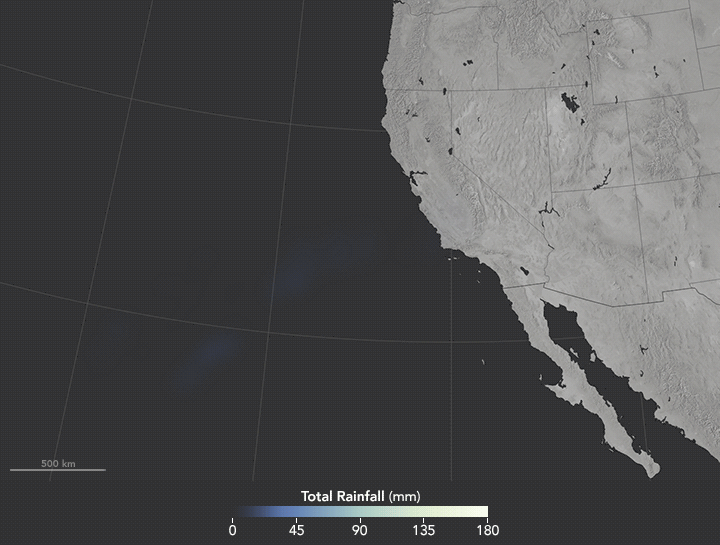'Pineapple Express' Triggers Floods in California, NASA Animation Shows

A different kind of river has been winding over California in recent weeks: NASA satellites spied a so-called atmospheric river passing over the state, bringing with it a deluge of stormy weather that has been flooding the West Coast.
For about a week, California and other parts of the western U.S. have been hit with rain and snow, causing severe flooding of rivers and valleys. According to NASA, the cause of the precipitation is known as an atmospheric river, a jet stream of moist air that can stretch tens to hundreds of miles wide.
The storm system can carry as much water vapor as 15 times the Mississippi River's flow, according to the National Oceanic and Atmospheric Administration (NOAA). An atmospheric river, also known as a "pineapple express" because the storm system often begins in the tropical Pacific, can bring 30 to 50 percent of the western U.S.' annual rainfall, NOAA estimates.
A NASA animation shows the atmospheric river's rainfall over California and the West Coast from Jan. 7 to Jan. 10, as measured by satellites every 30 minutes. Bright white spots in the animation show where rainfall has been heaviest. For instance, 15 feet (4.6 meters) of snow fell on California's Mammoth Mountain, according to the National Weather Service.
"San Francisco has seen more rain in the first two weeks of 2017 than it did in the entire year of 2013," NASA officials wrote in a post about the atmospheric river event.
The heavy rain and snow have caused mudslides and floods, and have killed at least five people, The Weather Channel reported. California's iconic drive-through tree, the Pioneer Cabin Tree in Calaveras Big Trees State Park, was toppled by the severe storms. Meteorologists predict that the storms will continue through the week.
The U.S. West Coast is not the only area to be hit by atmospheric rivers; a similar jet stream was found over Antarctica. This storm system moves from the Indian Ocean to East Antarctica, bringing snow and moisture to the dry continent.
Get the Space.com Newsletter
Breaking space news, the latest updates on rocket launches, skywatching events and more!
Original article on Live Science.
Join our Space Forums to keep talking space on the latest missions, night sky and more! And if you have a news tip, correction or comment, let us know at: community@space.com.

Kacey Deamer is a journalist for Live Science, covering planet earth and innovation. She has previously reported for Mother Jones, the Reporter's Committee for Freedom of the Press, Neon Tommy and more. After completing her undergraduate degree in journalism and environmental studies at Ithaca College, Kacey pursued her master's in Specialized Journalism: Climate Change at USC Annenberg. Follow Kacey on Twitter.










